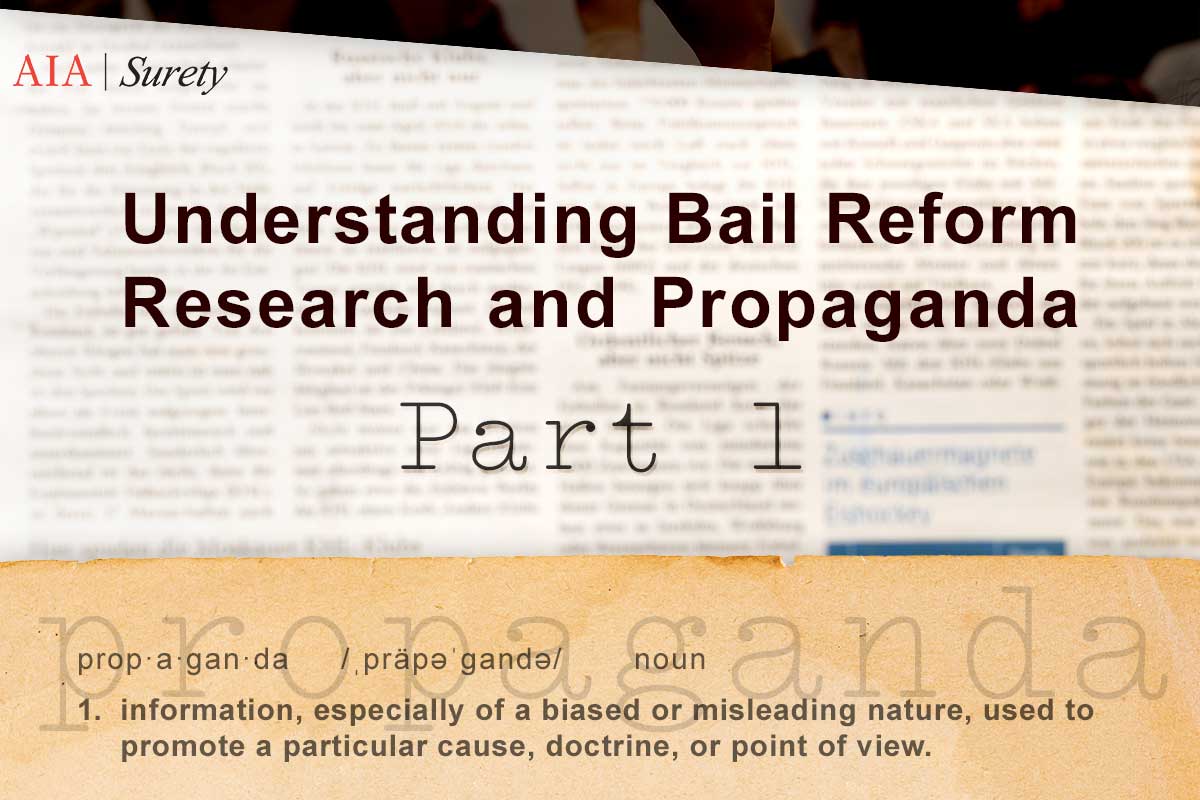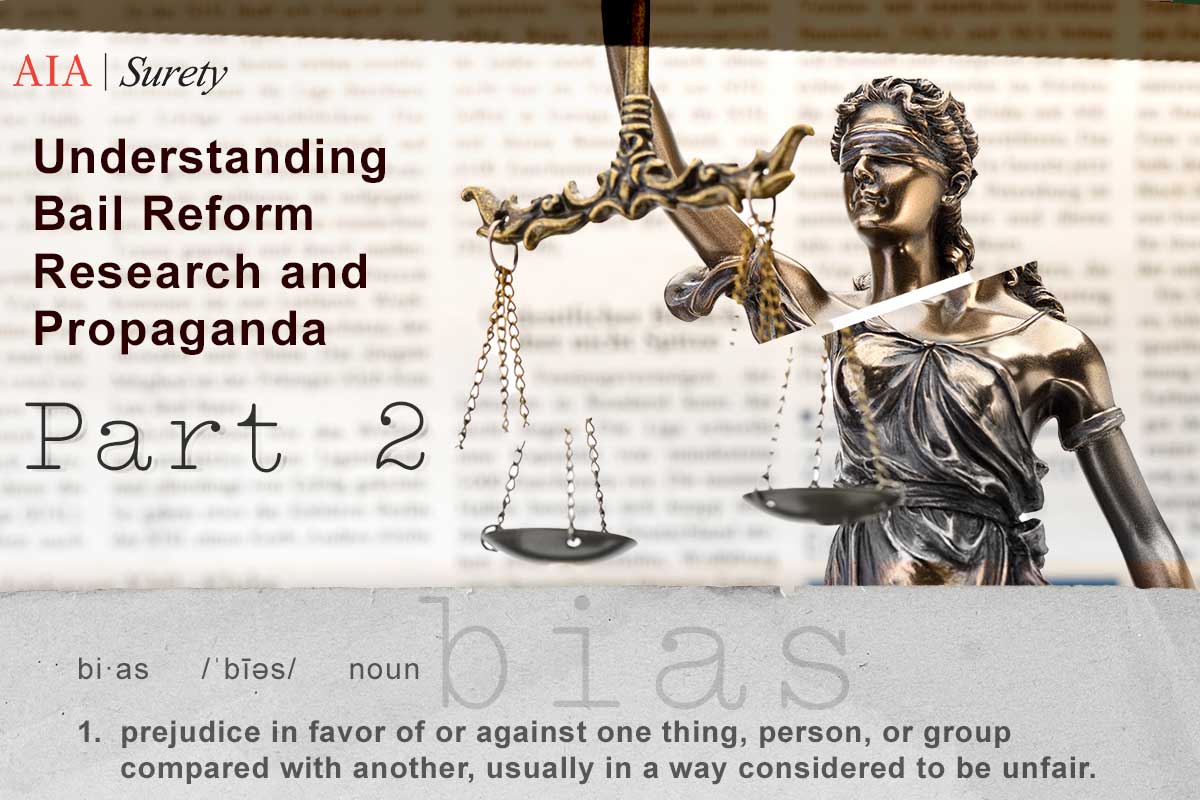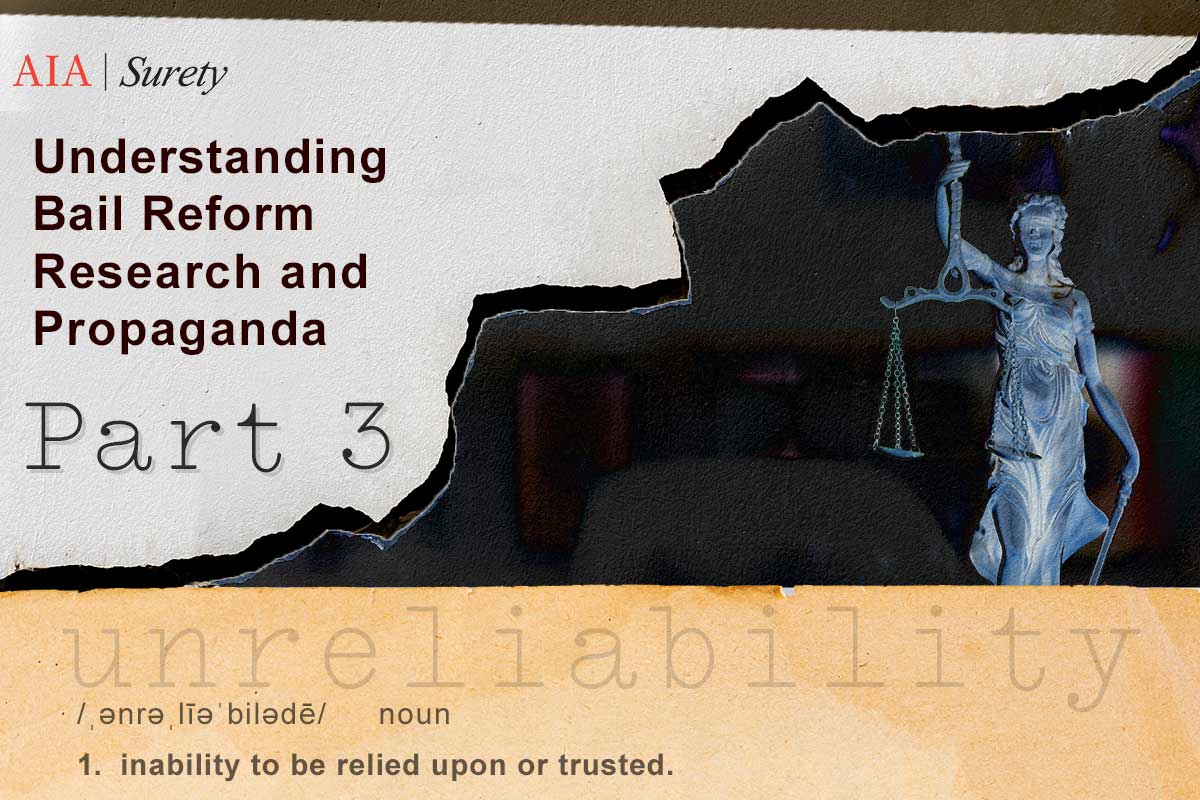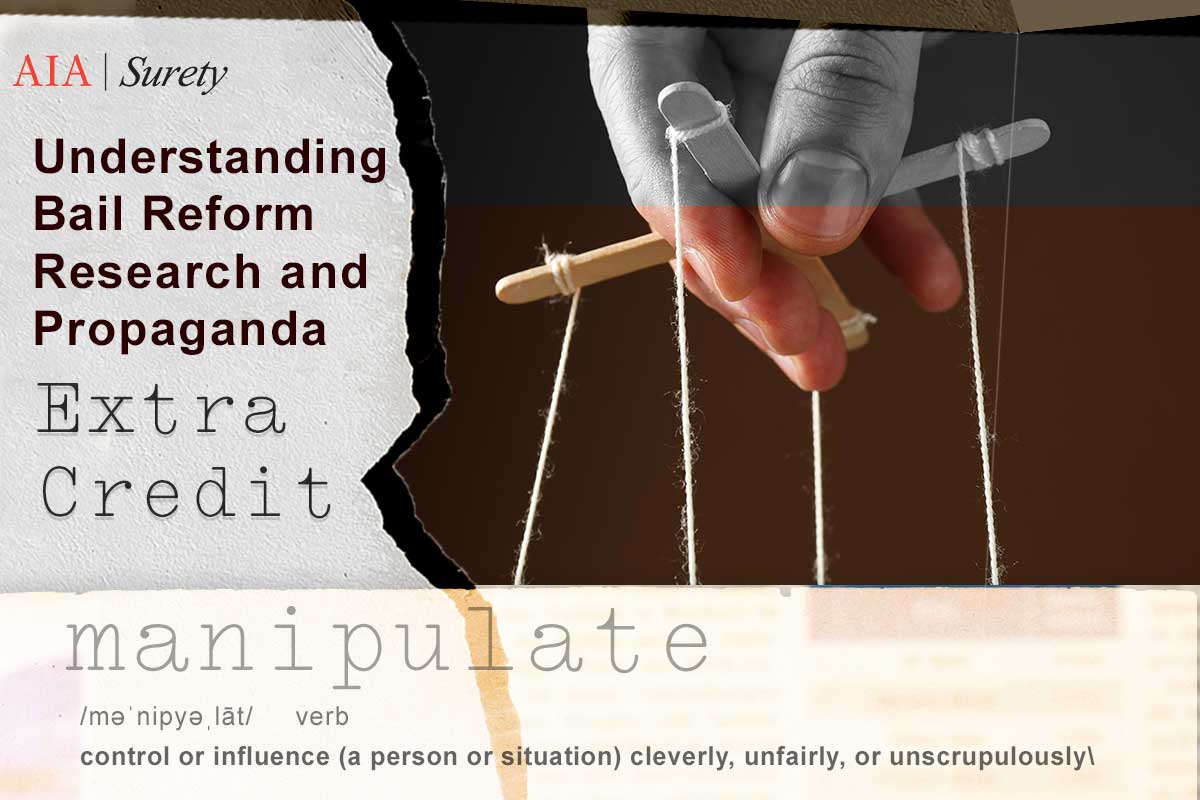Understanding Bail Reform Research and Propaganda (Part 4 of 4):
Harry Frank Guggenheim
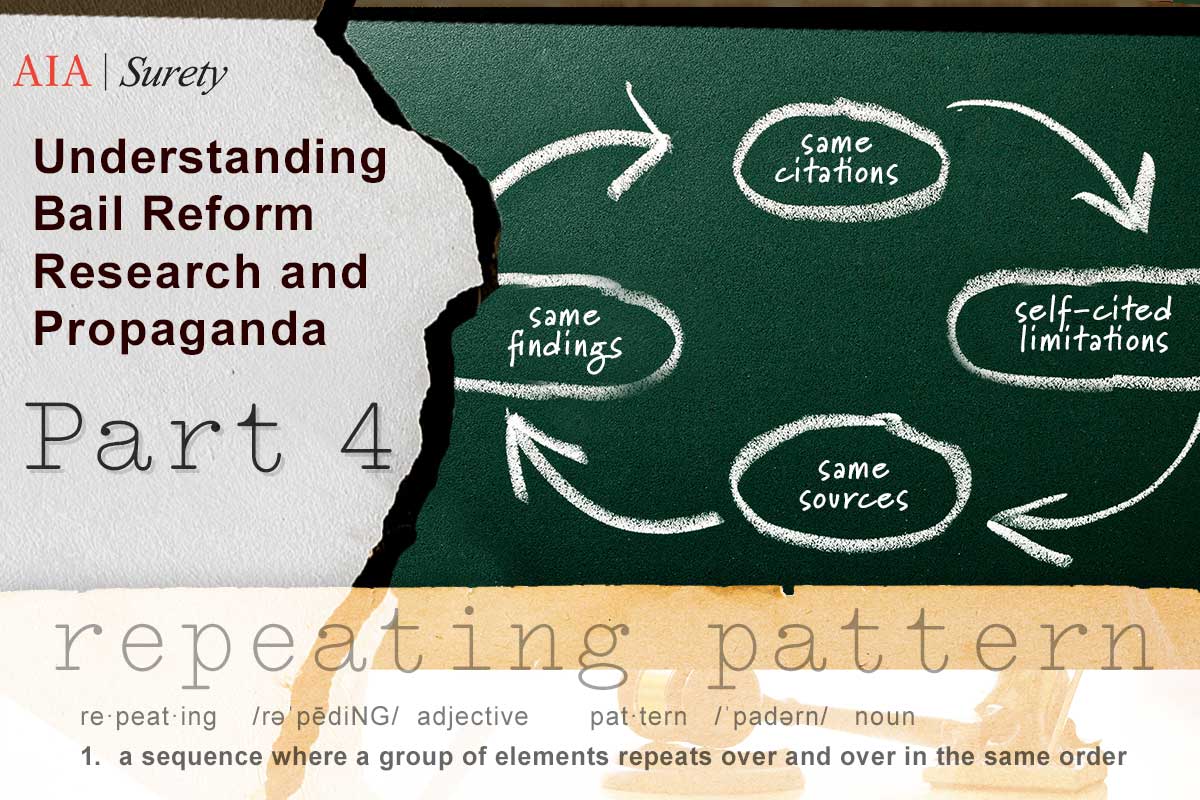
We have now gone through three studies that have all claimed that bail reform is not connected to any rise in crime. In fact, each of the studies have made the claim that not only was there no increase in crime related to bail reform, but communities were actually safer.
As we reviewed each of these studies, it was very apparent that these findings were not backed up with any sort of reliable data. The studies even pointed out their own deficiencies and limitations, but even still, the headlines promoting the studies continued to make outrageous and disingenuous claims. We found that all of the reports used the same circular reference structure citing each other and using the same sources to support their findings. To say that any of these research reports can be used to drive safe and responsible criminal justice policy is both dishonest and dangerous.
 The next, and last, study in our Bail Research series is from the Harry Frank Guggenheim organization. As you will see, the pattern stays the same with this study… the same findings that bail reform has not increased crime, the same citations, the same sources, and the same self cited limitations and deficiencies.
The next, and last, study in our Bail Research series is from the Harry Frank Guggenheim organization. As you will see, the pattern stays the same with this study… the same findings that bail reform has not increased crime, the same citations, the same sources, and the same self cited limitations and deficiencies.
Is Bail Reform Causing an Increase in Crime
January 2023
The last study and Par four of our Bair Reform Research series was conducted by the Harry Frank Guggenheim Foundation. HFG is a well-known charitable foundation focused on progressive policies. They have been very active in the bail reform fight supporting various pieces of legislation and efforts around the country to eliminate secured bail. The most notorious being HFG’s support for Proposition 47 in California. This is the California proposition that decriminalized most felonies (especially drug related charges) and reduced them to misdemeanors. This policy had an enormous negative impact on public safety in California. It ignited the retail theft epidemic and caused the homelessness problem in California to skyrocket. Knowing this background, it is hard to take any study coming from this organization seriously.
The study’s methodology and primary objective:
- Observe 13 bail reform jurisdictions to determine the effect, if any, of these policy changes on crime. This includes the following jurisdictions:
- Alaska
- Connecticut
- Maine
- Nebraska
- New Mexico
- New Jersey
- New York
- Illinois
- Harris County, TX
- Alabama
- New Orleans
- Philadelphia
- San Francisco
The study’s findings:
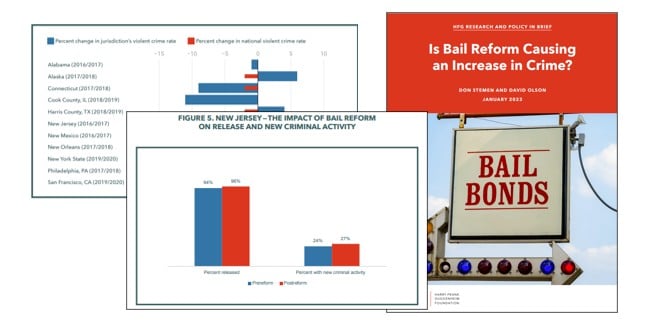 As I am sure you can imagine, the findings from all the jurisdictions showed that there was no link to bail reform and increased crime. To quote the study specifically,
As I am sure you can imagine, the findings from all the jurisdictions showed that there was no link to bail reform and increased crime. To quote the study specifically,
“In summary, neither violent nor nonviolent crimes or charges increased markedly immediately after jurisdictions implemented bail reform.”
Notice the use of the word “markedly.” It is innocuous enough to have the reader brush off its placement in the sentence with most readers reading that there was no increase immediately following the implementation of bail reform. The reality is the use of that word is key, because if you read the study…and we did…you will see that the results are not as good as they say.
Below are the results from several of the jurisdictions included in the research.
Cook County, Illinois
In Cook County, Illinois, the results do not really line up with the report’s findings. In fact, while pretrial releases increased from 77% of felony defendants to 85% (500 additional releases), failure rates stayed the same. Additionally, 17% were charged with an additional crime and 3% were charged with a violent crime. While those numbers sound great if you are a bail reform activist, the reality is that they are hiding the truth. If the failure rate stayed the same and more people were released, that means more people failed to show up for court. Simply tracking the rate is a false statistic that sounds good, but the reality is that after reforms, more crimes were committed and more people failed to appear for court. That hardly sounds like success.
The report goes so far as to even admit it…
“Some have argued that the reforms in Cook County increased crime. Specifically, critics argue that, although the percentage of released defendants charged with new offenses remained stable, because more people were released after reforms more crime was committed by the pool of released defendants. Twenty-one percent of the 14,097 additional people released in Harris County were charged with a new crime, representing 2,960 additional cases in the first year after reforms; 4.2 percent were charged with a new violent crime, which represents 592 additional cases in the first year after reforms.”
So now we understand why they used the word “markedly” in their findings. It makes the connection between crime and bail reform seem insignificant by insinuating that crime only increased a little. I am pretty sure we can all agree that close to 3000 additional crimes being committed is not insignificant and not good for our communities.
Philadelphia, Pennsylvania
In Philadelphia, the results are so bad that they had to explain that the data was so hard to sift through because it was not organized in a specific way that they couldn’t really tell us if there was a connection. But their findings still say that there isn’t a connection. Strange, huh?
“It is more difficult to estimate the total number of additional cases charged against individuals released after the reforms were enacted in Philadelphia, since the evaluations do not break down the total number of released defendants by felony or misdemeanor status; rather, the report simply provides the total number of defendants released.”
If you read into the report a little further, you can see that there were 297 additional crimes committed in Pennsylvania because of bail reform.
New Jersey
New Jersey has always been hailed as the poster child for successful bail reform. The challenge in New Jersey is while they have always claimed success, they have never shared numbers around FTA rates and crime. This report apparently spills the beans and tells us what we have always thought, bail reform in New Jersey made New Jersey less safe. Here are the numbers from the research report:
- They eliminated bail in nearly all cases
- Release through a summons increased from 54% to 71%
- Rate of charges increased 2.7%
- 597 additional crimes
Once again, more crime after bail reform was implemented. And we can’t forget how many hundreds of millions of dollars were spent to reform New Jersey’s pretrial system…all for more crime and less safety.
After going through all the jurisdictions, the authors make the following confusing statement…
“Based on our analysis, it seems safe to say that increases in the number of people released pretrial due to bail reforms led to additional crimes.”
Wait a second, did that just read that bail reforms did lead to additional crimes? Wow, it did. But wait, in their findings they said that there was no increase, or nothing markedly noted. The next sentence helps explain it though…
“However, evaluations in Cook County, Harris County, Philadelphia, and New Jersey show that this increase is small.”
So, there was an increase, but in the author’s opinion the increase was not big enough, so it is irrelevant and doesn’t matter. Tell that to the victims of those crimes. To them it does matter and the crime increase was significant.
The final kicker in this research is that the author says that when it comes to proper policy making, an increase in crime is acceptable if it outweighs the negative impacts of things like bail…
“Proper policy analysis requires that the very slight crime increases attributable to released defendants be weighed against the well-documented negative consequences that inhere in the experience of being held in jail.”
I am sorry, but that is hardly a comment legitimate researchers would make. That one statement alone discredits this research.
As always, the last thing we do is look at who the author is and what their sources and citations were. And just like the previous three studies, this research has the same flaws when it comes to these two elements.
First the author of the research, Dr. Don Stemen, comes from the Vera Institute of Justice, a well-known activist organization committed to ending the surety bail business. Hardly an objective source.
Secondly, if you review the sources used for this report, you see the same groups and organizations that you did in the previous three studies, the Brennan Center, the Vera Institute, the ACLU, the Pretrial Justice Institute, and the MacArthur Foundation to name a few. As we mentioned earlier, they use the same circular reference structure that cites studies that cited them. It appears as if they just keep linking these research reports together to create credibility and legitimacy through repetition.
In conclusion, as in the cases of the previous three research studies we reviewed, this HFG study falls into the same trap as the others. It makes a bold conclusion that there is no “meaningful” connection between bail reform and crime when the data in their research actually says there is.
We need to continue reviewing and assessing these reports as they come out and identify their shortcomings. We then need to continue unmasking these fake reports as what they are…pure propaganda.
Understanding Bail Reform Research and Propaganda Series
The Brennan Center for Justice’s “Bail Reform and Public Safety: Evidence from 33 Cities.”
This study was released last August and has been one of the studies that has been getting the most attention.
Tulsa, Oklahoma Study
The next bail reform research study we are reviewing is currently circulating on social media and other online media sources. This study is based in Tulsa, Oklahoma by The Bail Project
Harvard Kennedy School – December 2021
The next study we are going to review is from Harvard’s John F. Kennedy School of Government. The study was released in December 2021 and, much like the previous two studies we have reviewed, is focused on trying to disprove the concept that bail reform policies have increased crime in our communities.
Is Bail Reform Causing an Increase in Crime – January 2023
Our last study in our Bail Research series is from the Harry Frank Guggenheim organization. As you will see, the pattern stays the same with this study. The same findings that bail reform has not increased crime, the same citations, the same sources, and the same self-cited limitations and deficiencies.
SJ Quinney College of Law, University of Utah
Does Bail Reform Increase Crime? An Empirical Assessment of the Public Safety Implications of Bail Reform in Cook County, Illinois
Paul G. Cassell & Richard Fowles, University of Utah
Februrary 2020
This next study examines the outcome of the Bail Reform Act of 2017 passing in Illinois. This piece of legislation eliminated the use of any sort of financially secured pretrial release from the state of Illinois. In other words, the only options available to anyone who is arrested are now 1. free taxpayer funded release or 2. no release (detention). Neither of which are good nor effective options.

